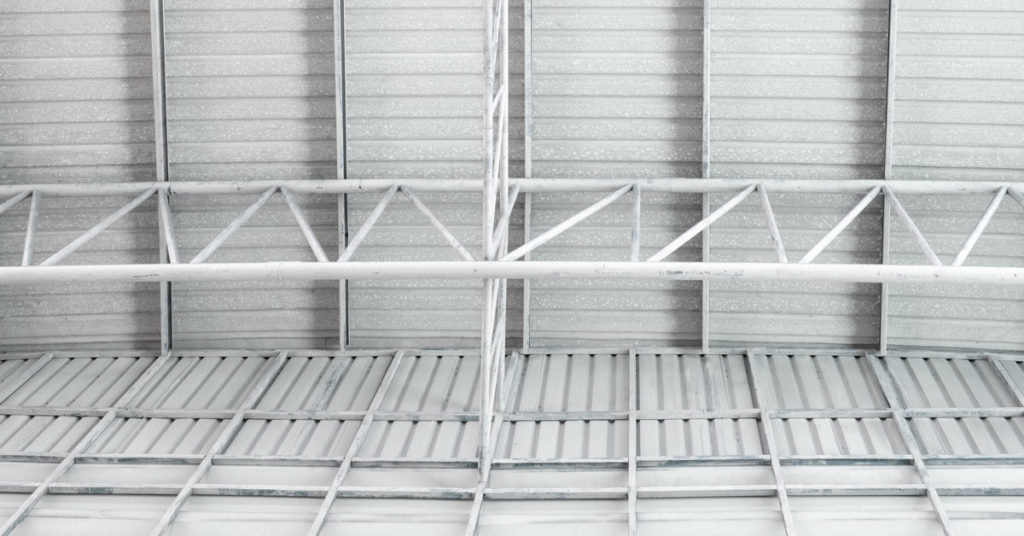
There’s an old adage in the cleaning game: Don’t forget to look up. But when it comes to high-ceiling cleaning, it’s admittedly easy to brush aside, given the delicate nature of the work.
But it’s incredibly important tackle the job if you’re going to keep your facility looking good and free of grime and dust – both of which can hinder air quality.
We talked with Brian Regnart, a KleenMark operations manager, to break down some of the most frequently asked questions we get about high-ceiling cleaning.
Question: What type of ceilings require regular cleaning?
Generally, exposed ceilings like those found in manufacturing and industrial facilities are what need cleaned on a regular basis. They often have exposed pipes, ductwork and other nooks and crannies that have a tendency to capture dirt and dust. However, more offices are being built in an industrial style with exposed ceilings, so it’s important to ensure your cleaning crews are monitoring high ceilings for dust buildup. Along with air quality, dirty ceilings and fixtures give the perception to employees and visitors that you don’t take cleaning seriously.
Q: How often should I clean high ceilings in my facility?
We usually recommend every other year for most buildings. In some manufacturing facilities, where particulates such as saw dust are floating through the air, we may recommend doing it annually.
Q: Are you only cleaning the ceiling or are you also cleaning light fixtures and duct work?
When we say “high-ceiling” we’re generally referring to everything that’s on or near the ceiling. That includes ductwork, HVAC systems, boiler pipes, light fixtures and so on. Depending on the facility, the needs will change.
Q: Does it disrupt regular operations?
No. When our crews take on a high-ceiling cleaning project, we prefer to work at night or during the slowest shift. If plants have a non-production day, we’ll also likely schedule our work during that time.
Q: Does high-ceiling cleaning require special equipment?
It does. For ceilings up to 15-feet high, we use what is called a SpaceVac. Basically, it’s a fancy Shop-Vac that allows us to reach further without needing a ladder. And the vacuum has special technology that prevents it from losing suction at such a distance.
For higher ceilings, we have scissor lifts that allow our cleaners to reach tough areas safely and effectively.
Q: How much time does it take?
Of course, this varies. But for large manufacturing facilities this often can be a multi-day job. The reason: We have to navigate lifts through narrow, often crowded spaces and ensure everyone is safe. Variables, including the need to clean individual light fixtures, can impact the time required. Still, it rarely takes more than3-4 eight-hour days.
Q: Is it messy?
No. We use vacuums to reduce the amount of dust and grime that falls to the floor. Additionally, we cover all machinery and floors when necessary to protect them from debris. We then thoroughly clean the floors and remove any dust that fell.
Q: Does it improve air quality?
Any time you’re removing particulates from a surface where people work, you’re contributing to better air quality. If your HVAC system is older, it may not work as effectively as it should when it comes to keeping your building dust-free. A high-ceiling cleaning can help alleviate that dust issue.
If you want to learn more about how we approach high-ceiling cleaning jobs, send us a note any time.
